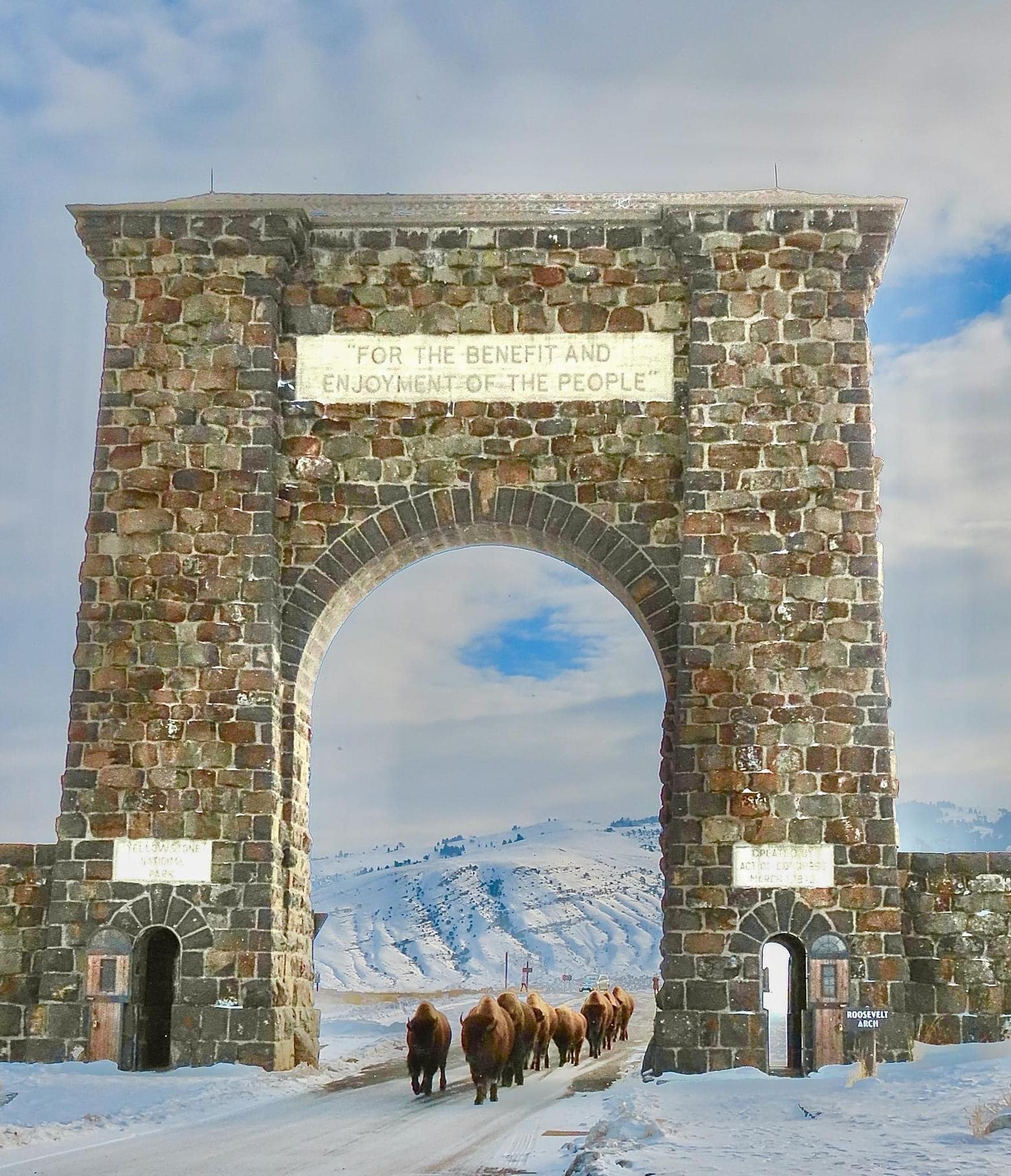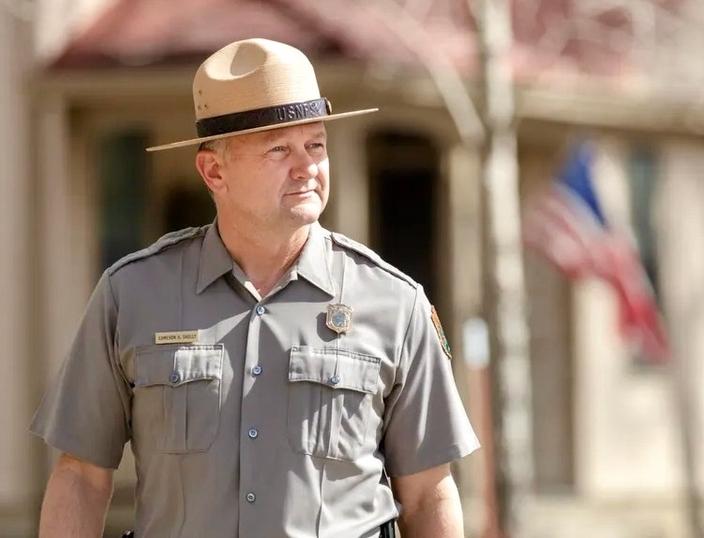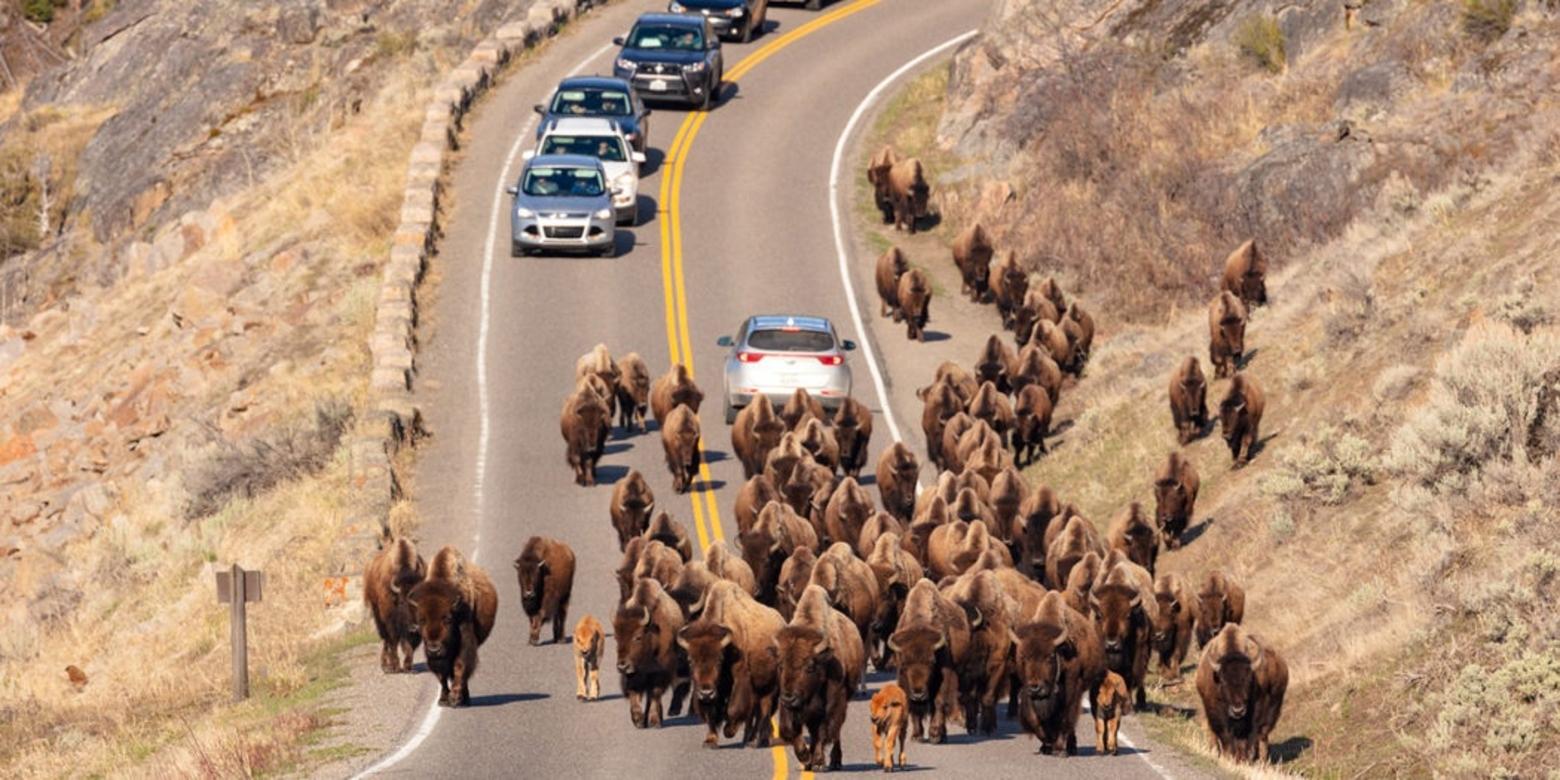Back to StoriesYellowstone Bison Plan Looks to Balance Interests
August 6, 2024
Yellowstone Bison Plan Looks to Balance InterestsConservation groups have largely praised the new plan to govern bison populations within Yellowstone. Some are concerned about conflicts when bison leave park boundaries
by
Alex Hargrave
A
new bison management plan is expected to modernize practices and largely
reflect the way the icon of the West is currently managed in Yellowstone
National Park.
The
National Park Service recently released both its final environmental impact
statement and record of decision to round out the National
Environmental Policy Act process that began in 2022. The agency went with its
“preferred alternative” in the plan, which will manage bison within a
population range of 3,500 to 6,000 after calving, averaging 5,000.
“That
is generally what the last 10-year average has been,” park Superintendent Cam
Sholly told Mountain Journal in a
July 25 interview. “From a population standpoint, we understand that more bison
could be inside Yellowstone from a summer habitat capacity perspective, but we
would have been irresponsible to not consider the winter habitat availability
and the limited tolerance outside the park.”
As
Sholly alluded to, Yellowstone bison and their management tend to split public
opinion, especially in areas bordering the park.
"Buffalo are treated like cattle. We need a paradigm shift to recognize buffalo for what they are and their importance on the land.” – Jason Baldes, Executive Director, Wind River Tribal Buffalo Initiative
Bison
populations in the West have fluctuated since the 19th century. The ungulate
was nearly hunted to extinction as white settlement expanded westward but over
the past 50 years, populations have rebounded. So has residential and
agricultural development outside the park. The combination has created more
potential for conflict, especially for ranchers raising cattle susceptible to
brucellosis, a disease that bison carry.
Brucellosis
is a contagious disease that can cause abortions in pregnant bison, cattle and
elk. According to the Animal and Plant Health Inspection Service, the disease
has mostly been eliminated in cattle, though livestock and wild animals in
Greater Yellowstone are occasionally infected. The
agency notes that bison and elk are the last carriers of this disease in the
U.S.
When
the Interagency Bison Management Program was established in the 1990s,
officials believed that bison were the primary risk of brucellosis transmission
to cattle. And while it’s documented that
roughly 60 percent of bison have brucellosis, research published since the
last bison management plan was conceived in 2000 shows that there has been no
documented transmission of the disease between bison and cattle. Instead, the
main culprit of wild to domestic transmission is elk, according to the final environmental
impact statement.
“Bison
are the only species we constrain, primarily because of a lack of tolerance
outside the park,” Sholly said. That tolerance, he added, has grown since the
IBMP’s inception, which was also reflected in the updated management plan.
During
winter and spring, bison are allowed to migrate from Yellowstone into tolerance
areas in Montana adjacent to the park’s northern and western boundaries, where
they are separated from livestock by distance or fences. Outside of these
tolerance areas, bison can be hazed back inside the park or killed.
Sholly
said that the tolerance zones have expanded since the first iteration of the
bison management plan. “I think that’s one of [Montana’s] biggest contributions
to a wild and free-ranging bison population, which is one of the major IBMP
goals,” he said.
The
Montana Stockgrowers Association has followed the plan’s development with a
watchful eye. Raylee Honeycutt, the organization’s executive vice president,
said that while they continue to review the lengthy documents, the Stockgrowers
emphasize the importance of management tools, including population control,
spring hazing, vaccination, culling, tribal hunting, and shipment to processing
facilities.
Late
last year, the association submitted its comments on the
draft environmental impact statement that signaled dissatisfaction with
the plan’s alternatives at the time, which are largely unchanged from the
alternatives in the final EIS, including the one chosen by the Park Service.
“MSGA continues to express its
concerns with the increase in the bison population as it is likely to increase
bison migration out the park and the risk of brucellosis transmission to cattle
and the limited forage availability in the park during winter for a growing
herd size,” according to an October press release from the group. “The
association is further concerned with the concept of limiting management tools
as the population increases, leading to an exponential growth in bison
numbers.”
The
state of Montana, while it also has not yet commented on specific management
prescriptions in the plan, expressed disappointment in early July about the
NEPA process and the state’s lack of involvement in it, despite its cooperating
agency status.
Montana
“YNP has
avoided substantive collaborative discussions with the state’s scientists and
technical advisors at every turn on this issue, offering meetings only when
documents and decisions were fully cooked,” Gianforte wrote in a letter to the
Interior Department after the final environmental impact statement was
released. “Such behavior only leads the State to one conclusion: the
alternative was chosen and the course pre-plotted before NEPA even started.”
In the state’s comments on the draft
environmental impact statement, it
called for lower population thresholds and noted that tolerance areas the plan
is based on are at the state’s discretion, and that they could shrink.
During
the NEPA process, the Greater Yellowstone Coalition, a conservation
organization headquartered in Bozeman, criticized the state’s position on bison
management, which the group said would “manage bison like livestock.”
The
coalition, in its own participation in the NEPA process, aimed for a population
range of 4,000 to 7,000, said Shana Drimal, senior wildlife conservation
associate with GYC. While the range the Park Service landed on is slightly
lower than the coalition had hoped, Drimal said she understands the science
behind the decision.
During
winter 2022-23, a heavy snowpack pushed bison out of the park earlier than
normal, around November, she said. It was also a highpoint in the past century
for the population, which numbered roughly 6,000 bison.
“What
we learned after that winter was that that was about the maximum that the areas
outside of the park could really handle in terms of numbers of bison being on
the landscape, based on the potential for conflicts, the potential for bison to
breach that tolerance area and try to move into Paradise Valley,” Drimal told Mountain Journal.
In
all, she said the new plan is a step forward in bison management. Before the
updated plan, the park managed for a population range of 3,500 to 5,000.
The
lack of land available for bison signals a need for more habitat improvements
to hold more bison in the future, Drimal continued. “This just goes to show
that we have more work to do,” she said.
Other
alternatives explored in the plan would have either maintained the status quo
or gone further in bison population growth, eliminating capture and processing.
The “no action” alternative would have maintained a range of 3,500 to 5,000
bison after calving. On the other side, the third alternative would have set a
population range of 3,500 to 7,000, ceased bison shipments to slaughter and,
instead, limit populations by public and tribal hunting.
Conservation
groups, including GYC, the Buffalo Field Campaign and the National Parks
Conservation Association, among others, want the Park Service to move away from
slaughter as a management method. As prescribed in the original bison
management plan in 2000, Park Service personnel have captured bison near
Yellowstone’s northern boundary during winter to reduce bison numbers and
prevent movement outside of tolerance areas. Captured animals have been shipped
to processing facilities or transferred to Native American tribes as part of
the Bison Conservation
Transfer Program.
“Bison are the only species we constrain, primarily because of a lack of tolerance outside the park.” – Cam Sholly, Superintendent, Yellowstone National Park
Under
the new management plan, the park will continue to support tribal harvest
outside the park boundary, Sholly said. Tribes exercise treaty rights to harvest bison on
unclaimed lands outside the park, including Blackfeet Nation, Confederated
Salish and Kootenai, Confederated Tribes of the Umatilla Reservation, Crow, Nez
Perce, Northern Arapaho, Shoshone-Bannock, and Yakama Nation.
Bison
hunts are an important aspect of Native American culture: for thousands of
years, tribes have hunted the animal for meat and used its hide to make
clothing, its bones to make tools.
Jason Baldes, executive director of the
Wind River Tribal Buffalo Initiative and a member of the Eastern Shoshone
Tribe, said that as a keystone species, bison support organisms on the
landscape, including plants, mammals, insects, birds and more.\
“They are the best land managers, if we
allow them to do it,” Baldes said. “We need to do more to allow buffalo to be
buffalo.
Still, Baldes said he sees the park’s
updated bison management plan as a compromise. Although he’s a proponent for
the park and its surrounds hosting as many bison as possible, he said he
believes the Park Service was successful in meeting the needs of the interests
involved.
While
the agency plans to move away from the controversial practice of shipping bison
to processing facilities, it remains part of the updated bison management plan.
“I know that’s very unpopular,” Sholly said. “It’d be great someday to get away
from shipment to processing. Right now, we’re solidifying where we are.”
Sholly
called the overall plan, a "good foundation for future decision making.” As
with the last iteration of the bison management program, it allows for adaptive
management changes based on emerging issues and changing circumstances.
“There
are many divergent opinions on this issue and this species,” he said.
“Continuing to work together to figure out how to achieve multiple—sometimes
conflicting—objectives is really important for us moving forward.”
________________________________________________________________________________________________________________________
Mountain Journal is a nonprofit, public-interest journalism organization dedicated to covering the wildlife and wild lands of Greater Yellowstone. We take pride in our work, yet to keep bold, independent journalism free, we need your support. Please donate here. Thank you.
Related Stories
March 7, 2025
Trump Administration Seeks to Unravel NEPA
The National Environmental Policy Act of 1969 kept all agencies following the same guidelines. An expedited rule change could dismantle that...
May 6, 2025
Planned Repeal of ‘Public Lands Rule’ Could Unleash Federal Resource Development
The Interior Department is exploring multiple ways to ‘restore American prosperity’ by capitalizing on timber, grazing, fossil fuels at the expense...
January 27, 2025
Grizzly Bear ESA Status in Question as FWS Cancels Public Meetings
The U.S. Fish and Wildlife Service pulls out of all four meetings intended to explain its decision to retain grizzlies’ threatened...






